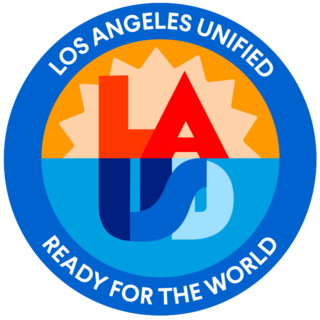
Palos Verdes Estates is a coastal city in Los Angeles County, California, United States, situated on the Palos Verdes Peninsula and neighboring Rancho Palos Verdes and Rolling Hills Estates. The city was master-planned by the noted American landscape architect and planner Frederick Law Olmsted Jr. The city is located along the Southern California coastline of the Pacific Ocean.

Rancho Palos Verdes is a coastal city located in south Los Angeles County, California. Incorporated on September 7, 1973, the city has a population of 42,287 as reported in the 2020 United States Census. Rancho Palos Verdes sits atop the bluffs of the Palos Verdes Peninsula, neighboring three other cities in the Palos Verdes Hills, namely Palos Verdes Estates, Rolling Hills, and Rolling Hills Estates.

Rolling Hills is a city on the Palos Verdes Peninsula, in Los Angeles County, California, United States. Rolling Hills is a gated community with private roads with three entry gates. Homes are single-story 19th century California ranch or Spanish haciendas exemplified by architect Wallace Neff. Incorporated in 1957, Rolling Hills maintains a rural and equestrian character, with no traffic lights, multi-acre lots with ample space between homes, and wide equestrian paths along streets and property lines.

Rolling Hills Estates is a city in Los Angeles County, California, United States. On the northern side of the Palos Verdes Peninsula, facing Torrance, Rolling Hills Estates is mostly residential. Incorporated in 1957, Rolling Hills Estates has many horse paths. The population was 8,067 at the 2010 census, up from 7,676 at the 2000 census. In 2018, the population rose to 8,141, and the 2020 census counted 8,280 residents.

San Pedro is a neighborhood within the City of Los Angeles, California, United States. Formerly a separate city, it consolidated with Los Angeles in 1909. The Port of Los Angeles, a major international seaport, is partially located within San Pedro. The district has grown from being dominated by the fishing industry, to a working-class community within the city of Los Angeles, to an increasingly dense community.

The Palos Verdes Peninsula is a peninsula and sub-region of the Los Angeles metropolitan area, located within southwestern Los Angeles County in the U.S. state of California. Located in the South Bay region, the peninsula contains a group of cities in the Palos Verdes Hills, including Palos Verdes Estates, Rancho Palos Verdes, Rolling Hills and Rolling Hills Estates, as well as the unincorporated community of Westfield/Academy Hill. The South Bay city of Torrance borders the peninsula on the north, the Pacific Ocean is on the west and south, and the Port of Los Angeles is east. As of the 2010 Census, the population of the Palos Verdes Peninsula is 65,008.
Palos Verdes Peninsula High School is a public high school in Rolling Hills Estates, Los Angeles County, California, United States. As of 2023, it is a top-ranked school in the Los Angeles, CA Metro Area (#16) and California (#42), according to US News & World Report.

Rancho Del Mar High School is one of three public high schools on the Palos Verdes Peninsula. Located on Crest Road in Rolling Hills, the school is part of the Palos Verdes Peninsula Unified School District.

The Palos Verdes Library District (PVLD) is an independent special library district serving the residents of the Palos Verdes Peninsula in Southern California. PVLD is governed by a publicly elected Board of Trustees that consists of five members who voluntarily serve without monetary compensation. PVLD's three libraries - Peninsula Center Library, Malaga Cove Library, and Miraleste Library - serve the cities of Palos Verdes Estates, Rancho Palos Verdes, Rolling Hills Estates, and Rolling Hills, California.

California's 36th congressional district is a U.S. congressional district in California. The 36th district is located primarily in the South Bay and Westside regions of Los Angeles. It takes in the cities of Beverly Hills, Santa Monica, the west side of Culver City, Hermosa Beach, Rancho Palos Verdes, Redondo Beach, Palos Verdes Estates, Rolling Hills Estates, El Segundo, Lomita, Manhattan Beach, and the west side of Torrance, as well as the Los Angeles neighborhoods of Venice, Playa del Rey, Palms, Cheviot Hills, Westwood Village, West Los Angeles, Mar Vista, Westchester, Marina Peninsula, and west side Harbor City.

Torrance Unified School District (TUSD) is a school district in Los Angeles County, California, with its headquarters in Torrance.

Palos Verdes High School (PVHS) is one of three public high schools on the Palos Verdes Peninsula in Los Angeles County, Southern California, USA. Located by the ocean in Palos Verdes Estates, the school is part of the Palos Verdes Peninsula Unified School District.

San Pedro High School is a public high school in the Los Angeles Unified School District and is located in the San Pedro portion of the city of Los Angeles, California. The school serves the entirety of San Pedro as well as most of the Eastview neighborhood of Rancho Palos Verdes. In 2003, the school celebrated its 100th Anniversary.
Los Angeles City High School District was a school district that served high school-aged residents of western Los Angeles County, California from 1890 to 1962. At times the district included Beverly Hills, Culver City, and Torrance.
The Los Angeles City School District was a school district that served Los Angeles, California, and some adjoining areas between 1870 and 1961.

Los Angeles Unified School District (LAUSD) is a public school district in Los Angeles, California, United States. It is the largest public school system in California in terms of number of students and the 2nd largest public school district in the United States, with only the New York City Department of Education having a larger student population. During the 2022–2023 school year, LAUSD served 565,479 students, including 11,795 early childhood education students and 27,740 adult students. During the same school year, it had 24,769 teachers and 49,231 other employees. It is the second largest employer in Los Angeles County after the county government. The school district's budget for the 2021–2022 school year was $10.7 billion, increasing to $12.6 billion for the 2022–2023 school year.
Miraleste High School was a public high school of the Palos Verdes Peninsula Unified School District (PVPUSD), located in Rancho Palos Verdes, California, in the Los Angeles metropolitan area.
The International Bilingual School, later International School of Los Angeles (ISLA), was an international bilingual day school in Palos Verdes Estates, California, in the Los Angeles metropolitan area, serving students in Kindergarten through grade 9. It was founded by Tadao Hara. The school later relocated to nearby Torrance.

There is a Japanese American and a Japanese national population in Los Angeles and Greater Los Angeles. Japanese people began arriving in the United States in the late 1800s and have settled in places like Hawaii, Alaska, and California. Los Angeles has become a hub for people of Japanese descent for generations in areas like Little Tokyo and Boyle Heights. As of 2017, Los Angeles has a Japanese and Japanese American population of around 110,000 people.
Nishiyamato Academy of California is a private Japanese international day school for students from pre-kindergarten through 9th grade, offering a Japanese guideline-based curriculum. The co-educational academy consists of a kindergarten, an elementary school division, and a middle school division with approximately 150 students, all located in Lomita, California, in the Los Angeles metropolitan area. Since March 1996, the academy has been authorized by Japanese Ministry of Education and its successor Ministry of Education, Culture, Sports, Science and Technology (MEXT) as a Private Overseas Educational Facility.













